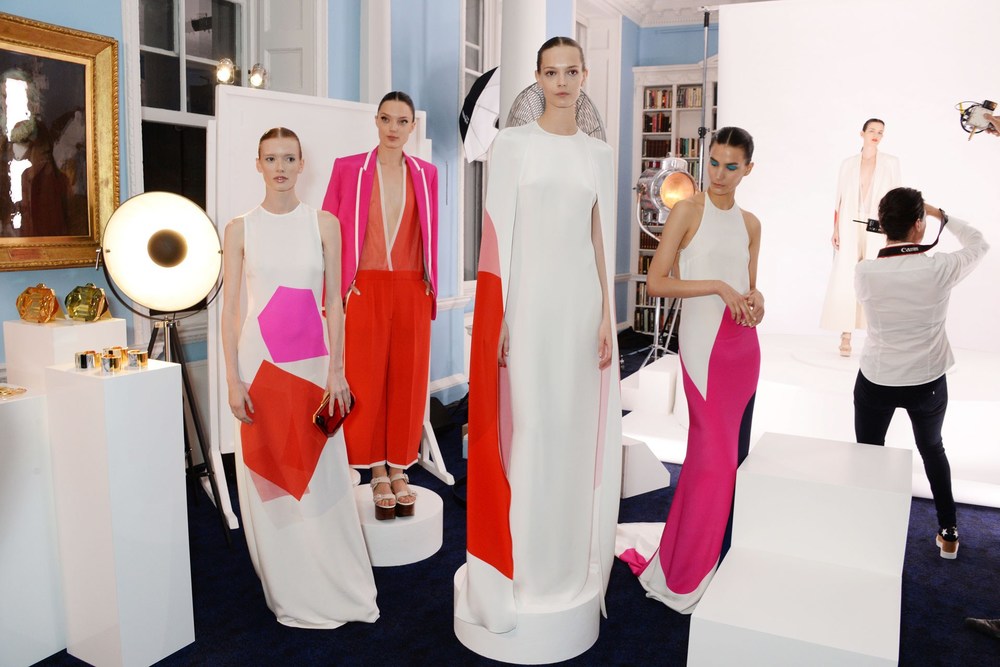Stella McCartney's 2014 Green Carpet Collection At London Fashion Week
/
Environmentalist Stella McCartney was center stage this week as she launched her Green Carpet Collection at the Royal Institution of Great Britain in Mayfair. Co-hosted by BFC chairman Natalie Massenet, Anna Wintour and GCC founder Livia Firth — who launched last year’s event — the evening gave McCartney the chance to unveil four ball gowns made of left-over fabric from McCartney’s studio; a range of shoes and accessories made from sustainably recycled materials; and a collection created from a brand-new organic cady that McCartney has developed.
Vogue writes:
“This is a fabric that I am definitely going to incorporate into my own collection,” she told us at the event. “I’ve been coming away from fittings over the last couple of weeks thinking ‘Wow’ - these are all recycled materials. In the fashion industry they burn all these thousands of metres of fabrics, which to me is crazy, so I’m recycling it.”

Stella McCartney has a long history of walking her talk on the subject of sustainability. The Fashion Globe writes that all Stella McCartney stores, offices and studios in the UK are powered by wind energy. 45% of McCartney’s total operations are run on 100% renewable energy.
The company estimates that in 2012, 34.3 metric tons of waste was diverted from landfills through recycling and technical development of new fabrics like the one unveiled at The Green Carpet Sunday evening.
Even Stella McCartney eyewear collections are made from over 50% natural and renewable resources. Those glamorous shades are made from raw materials including castor-oil seeds and citric acid.
Stella McCartney sums up her position on sustainability, saying:
It’s really the job of fashion designers now to turn things on their head in a different way, and not just try to turn a dress on its head every season. Try and ask questions about how you make that dress, where you make that dress, what materials you are using. I think that is far more interesting, actually. I think that the way to create sustainable fashion is to keep asking these questions while making sure to make desirable, luxurious, beautiful clothing and accessories that women want to buy.
